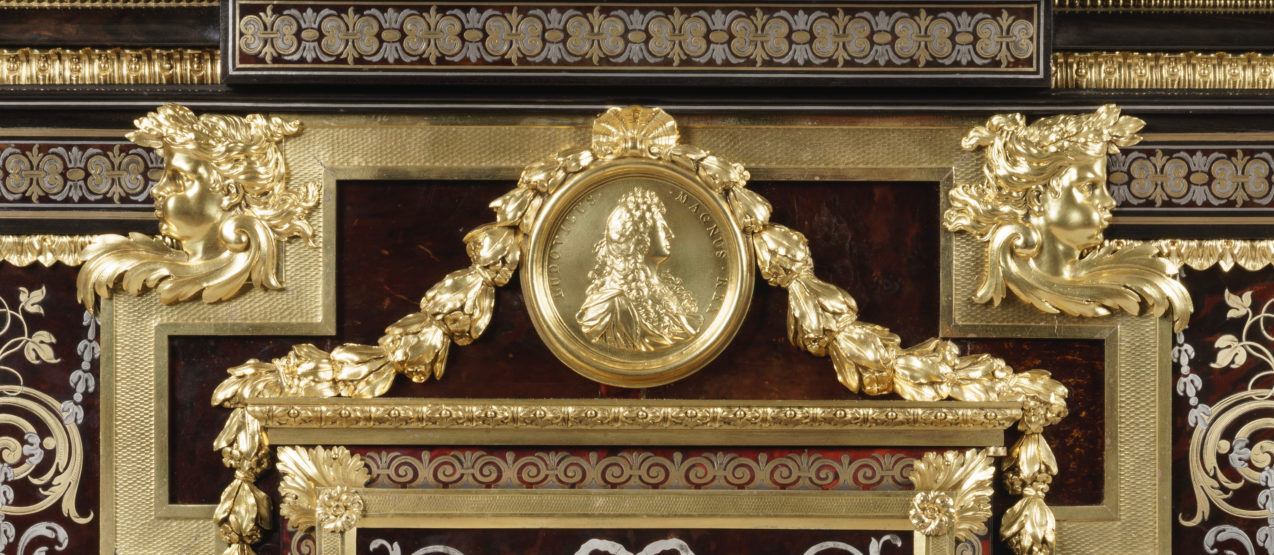The process for making gilt bronze was quite complicated. So much so that the French state set up two separate guilds to oversee its production: the fondeurs-ciseleurs (casters and chasers) and the ciseleurs-doreurs (chasers and gilders). Starting from a two-dimensional design, a carver or sculptor would make a three-dimensional model in wood, clay, or wax.
A wax mould taken from the model was used for casting by pressing it into a box with sand and pouring molten bronze, an alloy of copper and tin, in the resulting depression. For more complicated designs, the cire perdue, or lost-wax, process was used. In this technique, the wax model was fashioned around a core made of plaster or clay and covered with the same to form a mould. The mould was then dried and fired to burn out the wax. The hollow left by the wax was filled with molten bronze.
The ciseleur was in charge of removing the hardened and cooled bronze. He sharpened the edges and added a myriad of fine details which could not be achieved through the casting process alone. In order to create texture, a ciseleur would use tools called punches with variously shaped points. Some of the best ciseleurs working in France had over 3,000 punches at their disposal in their workshop! The quality of gilt bronze decorative objects and mounted furniture is crucially dependant on the ‘sharpness’ of the chasing, and it is what separates the run-of-the-mill from the truly divine demonstrated by the likes of Pierre-Philippe Thomire, Pierre Gouthiére, as well as Charles-Guillaume Winckelsen, Henry Dasson, and François Linke in the nineteenth century.
The final step was the mercury gilding, and was the responsibility of the ciseleur-doreur. Ground gold (hence the name or-moulu, moulu being the French for ‘ground’) was mixed with mercury, creating an amalgam, which was applied to the surface of the bronze using a brass-bristled brush called a bat. Placing the bronze over an open coal fire allowed the mercury to evaporate, leaving a layer of gold on the surface. Lastly, the smooth areas could be burnished, using a dog tooth, a heliotrope stone, or an agate mounted on a handle.
The study of gilt bronze is incredibly difficult because pieces are rarely signed. However, questions of dating and attribution can usually be answered by the presence of existing models or drawings as well as the quality of a specific piece. Cabinetmakers such as Henry Dasson, who was himself trained as a sculptor and took great pride in his sculptural gilt bronze mounts, went so far as to sign his work, leaving no doubts as to its maker. François Linke, who worked closely with the sculptor Léon Messagé, created some of the most dazzling ormolu-mounted furniture, and rightfully signed his work as well. Nevertheless, the vast majority of gilt bronze objects and furniture remain unsigned, and the quality is left to speak for itself.
Ormolu should be cleaned in the same way as gold. As with silver gilt objects, the gold layer is thin, soft and easily polished away. Small black spots can often be seen on ormolu. These are typically very hard and difficult to remove without damaging the gilding layer. Chemical treatment is needed to remove ‘black spot’, so consult a conservator.
By Rainier Schraepen of Butchoff Antiques

